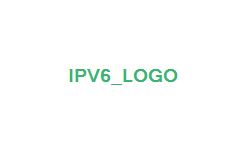Protocol transitions are not easy and the transition from IPv4 to IPv6 is no exception. Protocol transitions are typically deployed by installing and configuring the new protocol on all nodes within the network and verifying that all host and router operations work successfully. Although this might be easily managed in a small or medium-sized organization, the challenge of making a rapid protocol transition in a large organization is very difficult. Additionally, given the scope of the Internet, rapid protocol transition of the total environment becomes an impossible task.
The designers of IPv6 recognize that the transition from IPv4 to IPv6 will take years and that there might be organizations or nodes within organizations that will continue to use IPv4 indefinitely. Therefore, although migration is the long-term goal, equal consideration must be given to the interim coexistence of IPv4 and IPv6 nodes.
The inherent lack of dependencies between IPv4 and IPv6 hosts, IPv4 routing infrastructure, and IPv6 routing infrastructure requires a number of mechanisms that allow seamless coexistence.
- IPv4-only node: An IPv4-only node implements only IPv4 (and is assigned only IPv4 addresses). This node does not support IPv6. Most hosts and routers installed today are IPv4-only nodes.
- IPv6-only node: This node implements only IPv6 (and is assigned only IPv6 addresses). It is able to communicate with IPv6 nodes and applications only. Although this type of node is not common today, it may become more prevalent as smaller devices such as cellular phones and handheld computing devices include IPv6 stacks.
- IPv6/IPv4 node: This node has an implementation of both IPv4 and IPv6. It is IPv6-enabled if it has an IPv6 interface configured.
- IPv4 node: An IPv4 node implements IPv4 (it can send and receive IPv4 packets). It can be an IPv4-only node or an IPv6/IPv4 node.
- IPv6 node: This node implements IPv6 (it can send and receive IPv6 packets). An IPv6 node can be an IPv6-only node or an IPv6/IPv4 node.
For coexistence to occur, the largest number of nodes (IPv4 or IPv6 nodes) can communicate using an IPv4 infrastructure, an IPv6 infrastructure, or an infrastructure that is a combination of IPv4 and IPv6. True migration is achieved when all IPv4 nodes are converted to IPv6-only nodes. However, for the foreseeable future, practical migration is achieved when as many IPv4-only nodes as possible are converted to IPv6/IPv4 nodes. IPv4-only nodes can communicate with IPv6-only nodes only when using an IPv4-to-IPv6 proxy or translation gateway.



No comments:
Post a Comment